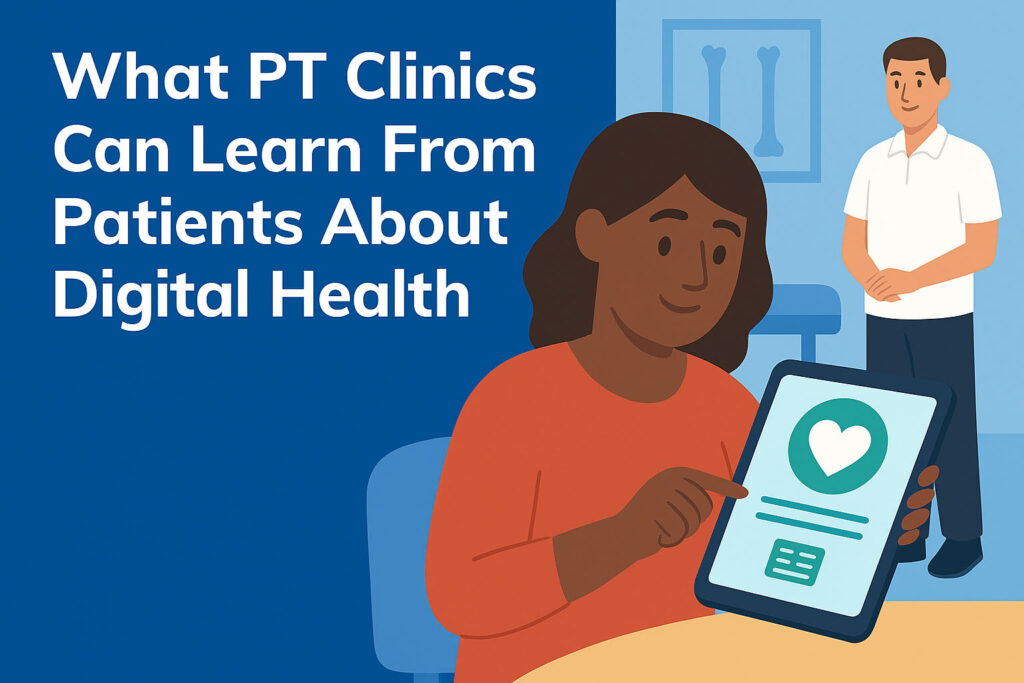Patient Engagement
Clayton W.
Digital Health Isn’t the Future, It’s the Now. But Only If We Bring Patients With Us.
As the Future of Rehab Therapy Summit approaches, there’s a growing conversation in the PT and rehab space:
Can digital health and traditional care coexist? The answer, if we’re listening to patients, is yes. But it depends on how we build it.

At OrthopedicMarketing.net, we’ve been keeping a close eye on this shift. And yes, we’ll be at the Summit in D.C., helping clinic owners navigate this evolution. But what’s equally important is what the data says, not just about technology, but about trust, design, and usability.
The Disconnect: Innovation Without Inclusion
A recent review published in PEC Innovation highlights what’s been missing from most digital health rollouts: patient input.
Despite the rise of portals, wearables, remote care platforms, and AI-powered assistants, many tools are still designed for patients rather than with them. That matters, because without patient-centered design, we’re seeing poor adoption, low engagement, and worse outcomes.
What Patients Actually Want From Digital Health
According to the research, when patients are actively involved in the design of digital tools, three things make the biggest difference:
- Empowerment: Giving patients access to data, notes, and insights makes them more likely to participate in their care and even challenge outdated assumptions during visits.
- Self-Management: Tools that help patients track progress, visualize goals, and manage lifestyle behaviors increase confidence and adherence between sessions.
- Personalization: Generic apps and one-size-fits-all reminders don’t cut it. Patients want solutions tailored to their conditions, habits, and even communication preferences.
Barriers Still Exist and They’re Fixable
Low digital and health literacy, especially among older adults, remains a challenge. But these aren’t reasons to slow down. They’re reminders that design needs to be intuitive, accessible, and built with empathy. Privacy concerns are real, but so is the willingness of patients to exchange data for better care when trust is established.
What This Means for PTs, OT Clinics, and Hybrid Providers
Alex Bendersky said it well in his recent LinkedIn post:
“Digital health and conventional care are not adversaries; they are, in fact, complementary systems.”
For providers, this means we need to stop viewing digital solutions as replacements and start treating them as extensions of the in-clinic experience. Whether you’re automating intake, offering virtual consults, or empowering patients through a portal, the question isn’t if your clinic will use digital health, it’s how well you’ll integrate it.
We’ll Be Talking About This at the APTA Summit
We’re proud to be attending the APTA’s Future of Rehab Therapy Summit this July in Washington, D.C.
If you’re curious how to bring patient-centered technology into your marketing, intake, or retention workflows, and want strategies that resonate with today’s digitally fluent (but still human) patients, let’s talk.
